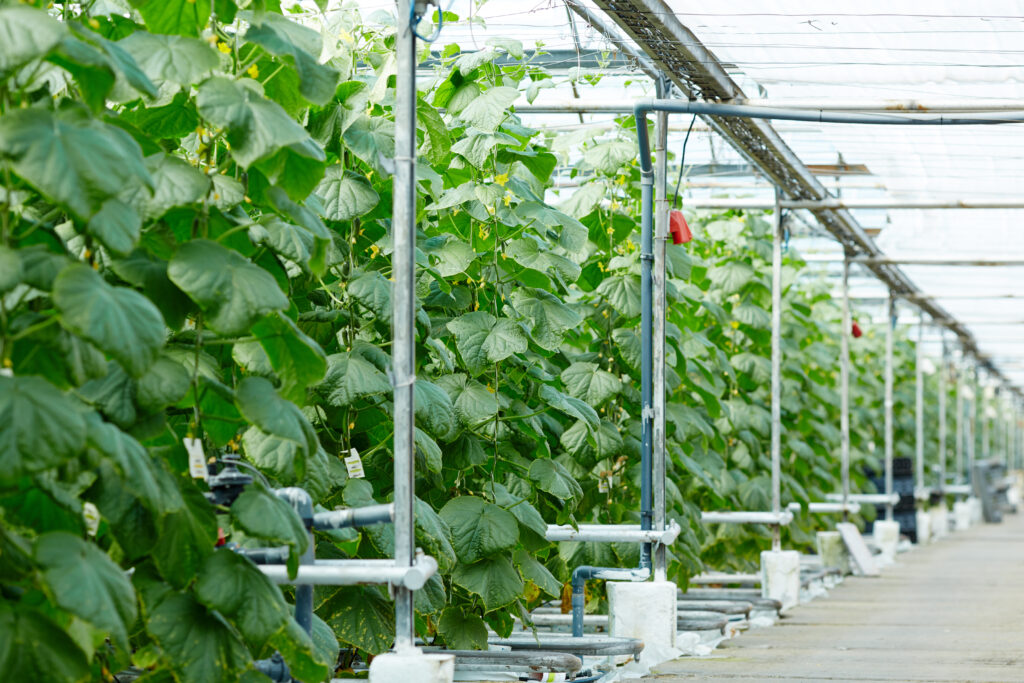Introduction: Imagine a world where meat is grown in labs, insects are a gourmet snack and your fridge personalize your meals based on your health needs. This could be the way food is made in the future; it’s not science fiction. Driven by a growing population, environmental concerns and ever-evolving technology, the way we produce, distribute and consume food is on the cusp of a major transformation. Buckle up, future foodies, because mealtime is about to get exciting and sustainable!
Challenges on Our Plate: Feeding a Future Full of People
The world’s population is expected to grow to an astounding 10 billion people by 2050. Feeding everyone with our current agricultural practices simply won’t be enough. Traditional farming methods put a strain on resources like water and land and contribute to greenhouse gas emissions. To guarantee a safe and sustainable food supply for future generations, we need creative solutions.
Tech on the Menu: How Innovation is Shaping Our Food
The good news? The future of food is brimming with ingenious ideas. Here’s a glimpse of what might be on your plate:
- Cellular Agriculture (Lab-grown Meat): Imagine a world where meat is produced without harming animals or the environment. Cellular agriculture or lab-grown meat, is making this a reality. Scientists can now cultivate meat from animal cells, offering a sustainable and ethical alternative to traditional meat production.
- Precision Fermentation: This revolutionary technology harnesses microbes to create protein, flavours and even fats. Think plant-based alternatives to cheese, yogurt and even meat, all produced through fermentation – a process similar to how beer is made!
- Vertical Farming: As cities sprawl, vertical farms are taking root (literally!). These innovative farms grow crops in vertically stacked layers, maximizing yield in a minimal footprint. This method uses less water and land, making it ideal for urban environments.
- Personalized Nutrition: In the future, your fridge might be your personal nutritionist. Imagine technology that analyzes your health data and preferences to recommend and even create customized meals tailored to your specific needs.

Beyond the Plate: A Shift in Food Culture
The future of food extends far beyond what’s on our plates. The following developments could completely alter how we obtain and use food:
- The Rise of Regenerative Agriculture: This approach focuses on improving soil health, biodiversity and carbon sequestration through practices like cover cropping and reduced tillage. Regenerative agriculture helps mitigate climate change while producing nutritious food.
- Embracing Alternative Proteins: Plant-based proteins like lentils, beans and peas are poised to become even more prominent in our diets. Insects, another sustainable source of protein, might also find their way onto our plates as people become more open to exploring new and delicious options.
- Food Transparency and Traceability: Consumers are increasingly demanding transparency about their food’s origin and production methods. Blockchain technology could play a key role here, allowing consumers to track their food from farm to fork, ensuring ethical and sustainable practices.
- Reducing Food Waste: Food waste is a significant global problem. The future promises smarter food storage and packaging solutions to minimize spoilage, while apps could connect consumers with discounted, nearing-expiry food, reducing waste significantly.
The Future of Food: A Symphony of Sustainability and Taste
The future of food is a melody of innovation, sustainability and deliciousness. Technological advancements will allow us to produce more food with fewer resources, while a shift in culture will see us embrace alternative proteins and prioritize ethical and environmentally friendly practices. This isn’t just about feeding a growing population – it’s about creating a future where everyone has access to safe, nutritious and delicious food, without harming the planet.
So, the next time you sit down to a meal, take a moment to ponder the future of food. The plate in front of you might be a glimpse into a world where sustainability and taste go hand-in-hand, where what we eat is not just good for us, but good for the planet as well. The future of food is delicious and it’s about to be served!
Conclusion: While the future of food presents exciting possibilities, it’s important to remember that the journey there requires collaboration. Embracing these innovations, supporting sustainable practices and being open to new culinary experiences will be key to shaping a future food system that nourishes both our bodies and our planet. Let’s embrace the future of food with open hearts, curious minds, and, of course, hungry appetites! ##


